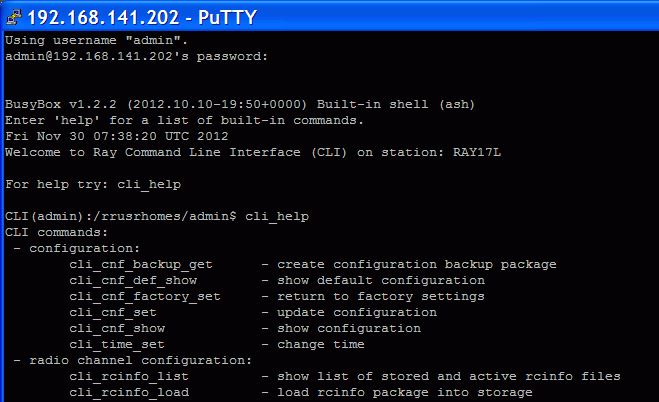
#PUTTY SSH COMMANDS SERIAL#
3.8.3.22 -sercfg: specify serial port configuration.3.8.3.21 -pgpfp: display PGP key fingerprints.3.8.3.20 -hostkey: manually specify an expected host key.3.8.3.19 -loghost: specify a logical host name.3.8.3.18 -i: specify an SSH private key.

3.8.3.17 -4 and -6: specify an Internet protocol version.3.8.3.16 -1 and -2: specify an SSH protocol version.3.8.3.14 -nc: make a remote network connection in place of a remote shell or command.3.8.3.13 -N: suppress starting a shell or command.3.8.3.12 -t and -T: control pseudo-terminal allocation.If you want to run the shell after the cd command, you need to add it explicitly to your cmd.txt, like: cd /my/path /bin/bash Also the -m implies 'nopty'/non-interactive mode. So once your command finishes, so does the session. 3.8.3.11 -X and -x: control X11 forwarding What the -m does is, that it makes PuTTY instruct the SSH server to start that command(s) INSTEAD of a shell.The -t flag can be used with most interactive commands, including text editors like pico and vi. With the -t flag, ssh keeps you logged in until you exit the interactive command. Without the -t flag top will return results after which ssh will log you out of the remote host immediately.

3.8.3.10 -A and -a: control agent forwarding That tells ssh that youll be interacting with remote shell.3.8.3.9 -agent and -noagent: control use of Pageant for authentication.3.8.3.6 -m: read a remote command or script from a file.3.8.3.5 -L, -R and -D: set up port forwardings.

#PUTTY SSH COMMANDS DOWNLOAD#
#PUTTY SSH COMMANDS PASSWORD#
Type the SSH user name at the login as a prompt in the command line window and press the enter key Type in the SSH password at the login as prompt in the command line window and press the enter key. Previous page next page 3.8 The PuTTY command line To open the command line windows, click on the Open button.


 0 kommentar(er)
0 kommentar(er)
